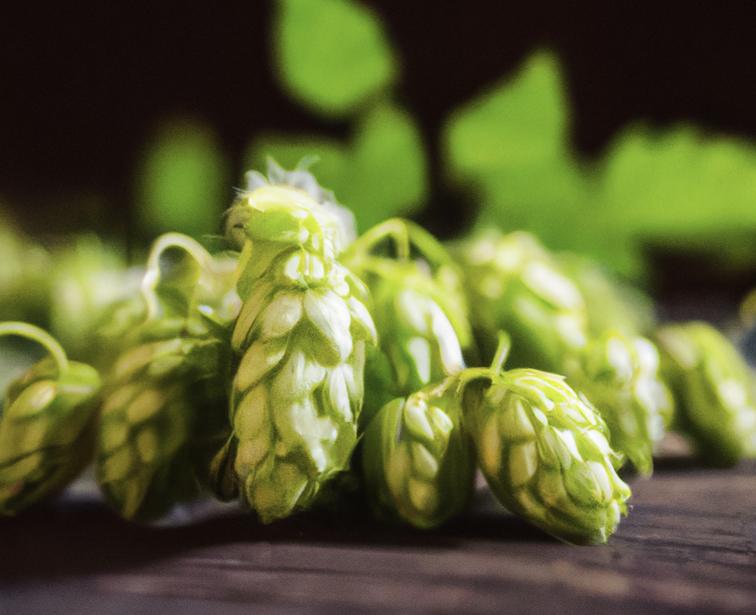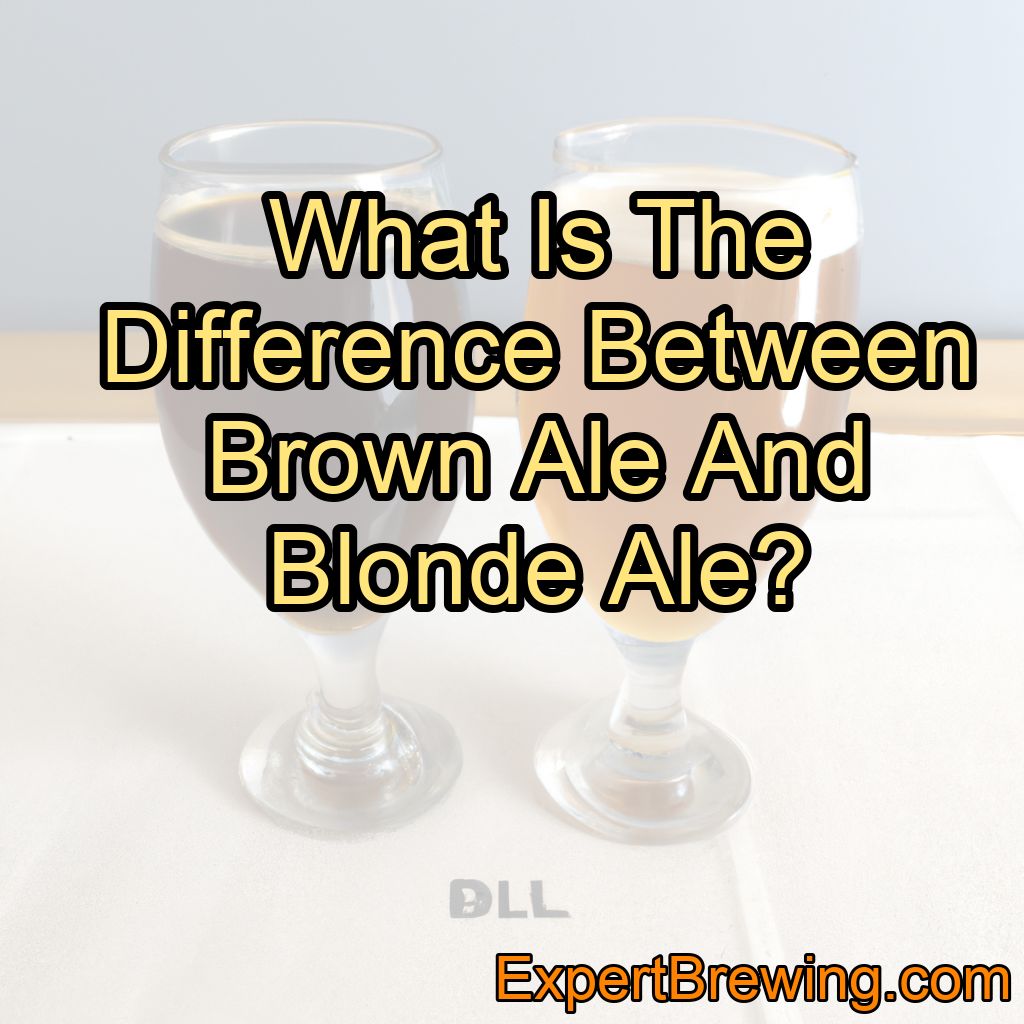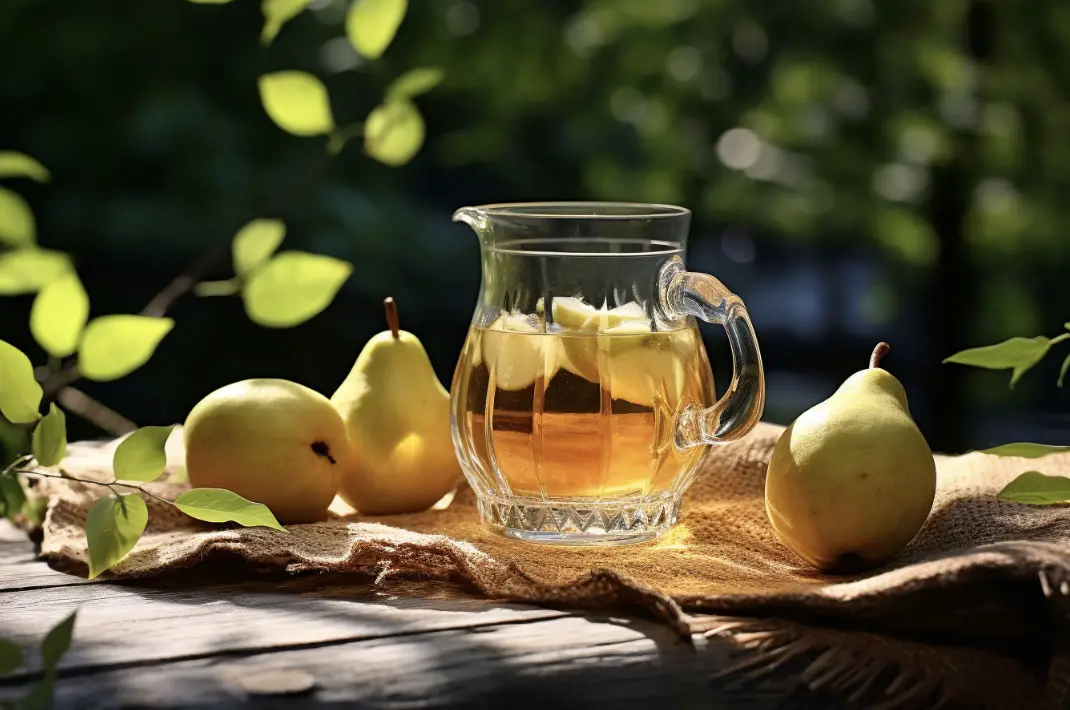Have you ever found yourself standing in front of a selection of craft beers, wondering what the difference between a brown ale and a blonde ale is?
You are not alone. With the ever-growing popularity of craft beer and the seemingly endless variety of styles available, it can be a challenge to keep them all straight.
The main difference between brown ale and blonde ale lies in their malt profiles, color, and flavor. Brown ales tend to be darker and feature roasty, toasty, and caramel flavors, while blonde ales are lighter in color with a crisp, clean taste.
In this blog post, we will dive into the key differences between brown ales and blonde ales, examining their origins, flavor profiles, ingredients, and brewing techniques. Plus, we will explore some popular examples of each style, so you can confidently choose your next brew.

A Brief History of Brown Ale
Brown ale is believed to have originated in England during the 17th century. At that time, the term “brown ale” referred to any beer that was brewed using brown malt, which was kilned over a wood fire, giving it a dark color and a distinct smoky flavor. Over time, the use of roasted and caramel malts became more prevalent, and the modern-day brown ale was born.
There are two main styles of brown ale: English Brown Ale and American Brown Ale. The English Brown Ale is further divided into Northern and Southern English Brown Ales. The Northern English Brown Ales tend to be more malty and sweet, while the Southern English Brown Ales are drier and have a more subtle malt flavor. American Brown Ales, on the other hand, have a stronger hop presence and often feature more robust flavors.
A Brief History of Blonde Ale
Blonde ale, also referred to as golden ale, is a relatively recent addition to the beer world. This style of ale is believed to have originated in the United States in response to the rising popularity of light lagers in the 20th century. Blonde ales were created to offer a lighter, more approachable beer option to those who might not yet be ready for the more intense flavors and characteristics of other craft beers.
Blonde ales are generally considered to be a gateway beer for those who are new to craft beer, as they offer a balanced, easy-drinking experience. They are also popular during the warmer months, as their light, crisp flavors are refreshing on a hot day.
Malt Profiles and Ingredients
One of the key differences between brown ale and blonde ale is the malt profile of each beer. The malt used in brewing plays a significant role in determining the color, flavor, and aroma of the final product.
Brown Ale
Brown ales are brewed primarily with darker malts, such as chocolate malt, caramel malt, and roasted barley. These malts give the beer its signature dark color and contribute to its rich, roasty, and toasty flavors. In addition to these darker malts, brown ales may also include a mix of pale and specialty malts.
Blonde Ale
Blonde ales, on the other hand, are brewed predominantly with pale malts, which give the beer its lighter color and cleaner flavor profile. Occasionally, small amounts of specialty malts may be used to add a subtle biscuity or bready character to the beer, but the overall malt presence is much less pronounced than in a brown ale.
Hop Profiles and Bitterness
The hop profile of a beer can have a significant impact on its overall flavor, aroma, and bitterness. While both brown ales and blonde ales typically have a moderate hop presence, there are some differences between the two styles.

Brown Ale
In brown ales, the hop presence is generally more subdued, as the primary focus is on the rich malt flavors. English Brown Ales tend to use traditional English hops, which contribute a mild earthy or floral character to the beer. American Brown Ales, however, often feature American hop varieties, which can impart a more pronounced hop flavor and aroma, with notes of citrus, pine, or tropical fruit.
Blonde Ale
Blonde ales typically have a moderate hop presence, with a focus on providing balance to the malt profile. The hops used in brewing blonde ales can vary widely, as the primary goal is to create a crisp, clean, and easy-drinking beer. Some examples may lean toward a more hop-forward profile, while others may be more malt-focused.
Color and Appearance
As their names suggest, one of the most obvious differences between brown ale and blonde ale is their color. This difference in color is primarily due to the types of malt used in the brewing process.
Brown Ale
Brown ales range in color from a deep amber to a dark brown, with some examples appearing almost black. The beer is often clear, though some examples may have a slight haze due to the use of specialty grains or unfiltered brewing techniques.

Blonde Ale
Blonde ales, on the other hand, are much lighter in color, ranging from a pale straw to a light gold. The beer is typically clear and bright, with a moderate to high level of carbonation that contributes to a lively, effervescent appearance.
Flavor Profiles
The flavor profiles of brown ale and blonde ale are quite distinct, with each style offering its own unique array of tastes and aromas.
Brown Ale
Brown ales are known for their rich, malty flavors, which can include notes of caramel, toffee, toasted bread, nuts, and chocolate. The hop presence in brown ales is generally subdued, with any hop flavors or aromas serving to complement and balance the malt profile. English Brown Ales may also have a slight fruity character, resulting from the use of traditional English ale yeast strains.
Blonde Ale
Blonde ales are characterized by their clean, crisp flavors, with a light malt presence that can include subtle notes of bread, biscuits, or grain. The hop profile of blonde ales is typically moderate, providing a balanced bitterness and a hint of hop flavor and aroma, which can include notes of floral, citrus, or herbal characteristics.
Mouthfeel and Body
The mouthfeel and body of a beer can greatly impact the overall drinking experience. Both brown ale and blonde ale are generally medium-bodied, but there are some differences in their mouthfeel and level of carbonation.
Brown Ale
Brown ales tend to have a smooth, medium-bodied mouthfeel, with a moderate level of carbonation that complements the rich malt flavors. Some examples, particularly those with a higher alcohol content, may have a slightly creamy or velvety texture.
Blonde Ale
Blonde ales have a crisp, clean mouthfeel, with a medium body and a moderate to high level of carbonation. This effervescence helps to create a refreshing, easy-drinking beer that is perfect for warm weather or as an introduction to craft beer for those new to the scene.
Food Pairings
Both brown ale and blonde ale pair well with a variety of foods, making them versatile choices for beer lovers and foodies alike.
Brown Ale
Brown ales pair particularly well with hearty, comfort foods, such as roasted or grilled meats, stews, and casseroles. The rich malt flavors complement the savory dishes, while the moderate hop presence helps to cut through any richness or fattiness. Brown ales also pair well with nutty or earthy cheeses, such as Gouda or cheddar, and can even be used as a base for a delicious beer cheese sauce.
Blonde Ale
Blonde ales are a fantastic choice for pairing with lighter fare, such as salads, grilled chicken, or seafood dishes. The crisp, clean flavors of a blonde ale help to enhance and complement the fresh, bright ingredients, while the moderate hop presence adds a touch of bitterness to balance the flavors. Blonde ales also work well with mild, creamy cheeses, like Brie or Camembert, and can even be enjoyed alongside a light dessert, such as a fruit tart or lemon bars.
Popular Examples of Brown Ale and Blonde Ale
Now that you have a better understanding of the differences between brown ale and blonde ale, let’s explore some popular examples of each style.
Brown Ale
1. Newcastle Brown Ale (English Brown Ale)
2. Samuel Smith’s Nut Brown Ale (English Brown Ale)
3. Bell’s Best Brown Ale (American Brown Ale)
4. Avery Brewing Ellie’s Brown Ale (American Brown Ale)
5. Dogfish Head Indian Brown Ale (American Brown Ale)
Blonde Ale
1. Firestone Walker 805 Blonde Ale
2. New Belgium Brewing Company – Dayblazer Easygoing Ale
3. Kona Brewing Company – Big Wave Golden Ale
4. Great Divide Brewing Company – Denver Pale Ale
5. Alaskan Brewing Company – Alaskan Blonde Ale
Conclusion: Embrace the Rich Variety of Beer Styles
In conclusion, the main difference between brown ale and blonde ale lies in their malt profiles, color, and flavor. Brown ales are darker and feature roasty, toasty, and caramel flavors, while blonde ales are lighter in color with a crisp, clean taste. Both styles offer unique and enjoyable drinking experiences, suitable for a variety of occasions and food pairings.
To fully appreciate the diverse world of beer, we encourage you to explore and enjoy both brown ales and blonde ales, along with the many other styles available. Remember:
1. Brown ales originated in England, while blonde ales were created in the United States.
2. Brown ales feature darker malts, while blonde ales use primarily pale malts.
3. Hop profiles differ between the two styles, with brown ales having a more subdued hop presence and blonde ales focusing on balance.
4. Brown ales are darker in color, ranging from deep amber to dark brown, while blonde ales are lighter, ranging from pale straw to light gold.
5. Brown ales have rich, malty flavors, while blonde ales offer a clean, crisp taste.
6. Mouthfeel and body are generally medium for both styles, but brown ales tend to be smoother while blonde ales are more effervescent.
7. Both styles pair well with a variety of foods, with brown ales complementing hearty dishes and blonde ales enhancing lighter fare.
8. There are two main styles of brown ale: English Brown Ale and American Brown Ale.
9. Blonde ales are often considered a gateway beer for those new to craft beer.
10. Popular examples of each style include Newcastle Brown Ale, Bell’s Best Brown Ale, Firestone Walker 805 Blonde Ale, and New Belgium Dayblazer Easygoing Ale.
So, the next time you find yourself standing in front of a selection of beers, you can confidently choose between a brown ale and a blonde ale, knowing the key differences and what to expect from each delicious style. Cheers!
FAQs
What is the difference between blonde beer and dark beer?
Blonde beer is typically lighter in color and has a milder flavor profile, while dark beer is darker in color and has a more robust, malty flavor. The color and flavor differences are due to the types of malts and grains used in the brewing process.
What does it mean if a beer is blonde?
Blonde beer typically refers to a light-colored beer that is usually made with pale malts and has a mild, refreshing taste.
Is blonde beer stronger?
No, the color of beer does not indicate its strength. The strength of beer is determined by its alcohol content, which can vary regardless of color.
Is dark beer better than light beer?
No, the color of beer does not necessarily indicate its quality or taste. It is a matter of personal preference and the type of beer being consumed.
What is a blonde ale?
Blonde ale is a type of beer that is light in color, low in bitterness, and has a clean, crisp taste. It is typically brewed with pale malt and may have subtle notes of fruit or spice. Blonde ales are easy-drinking and refreshing, making them a popular choice for summertime or casual drinking occasions.
What is the difference between blonde and dark beer?
Blonde beer is typically lighter in color and has a more delicate, crisp taste, while dark beer is richer, fuller-bodied and has a more complex flavor profile with roasted malt notes.




